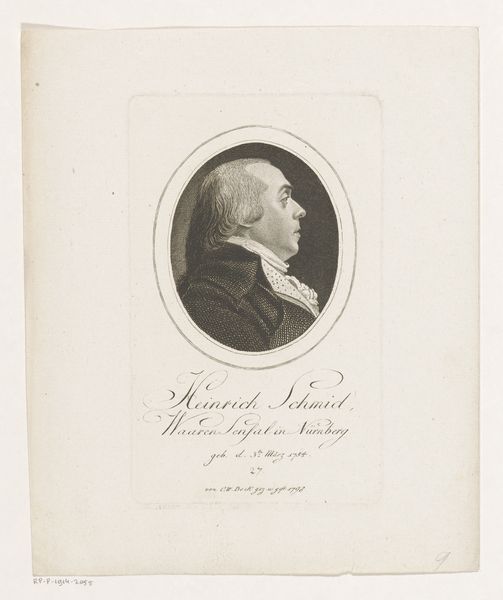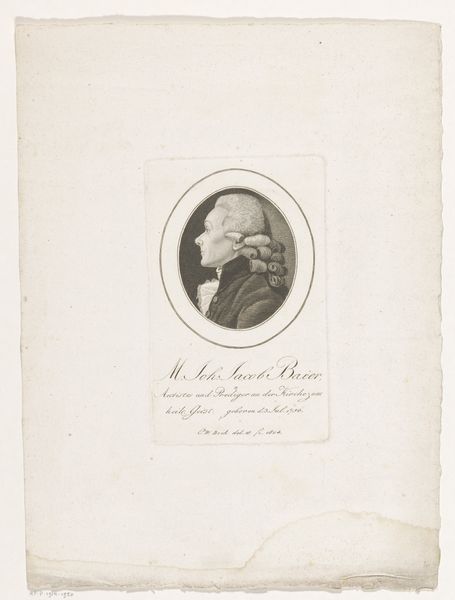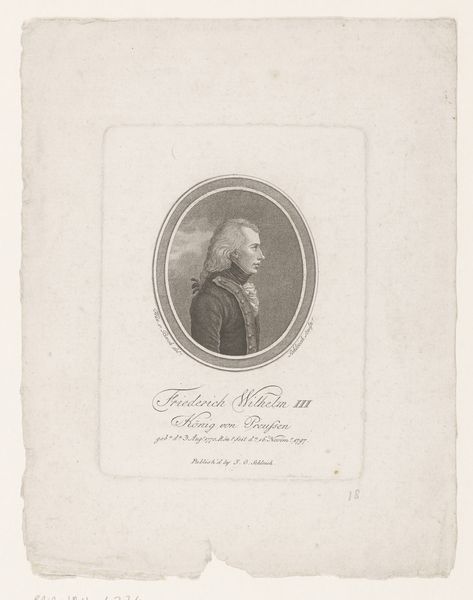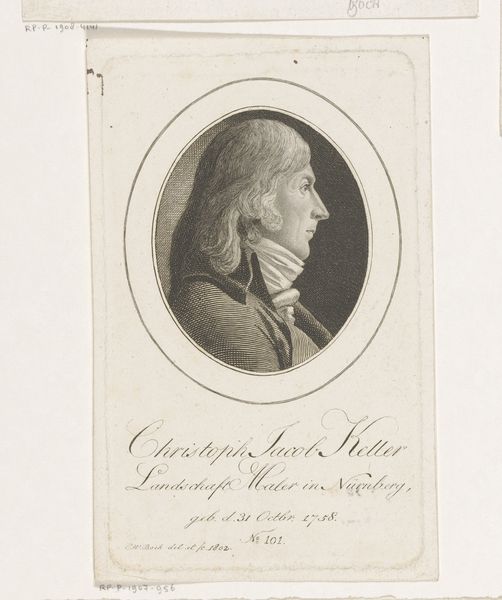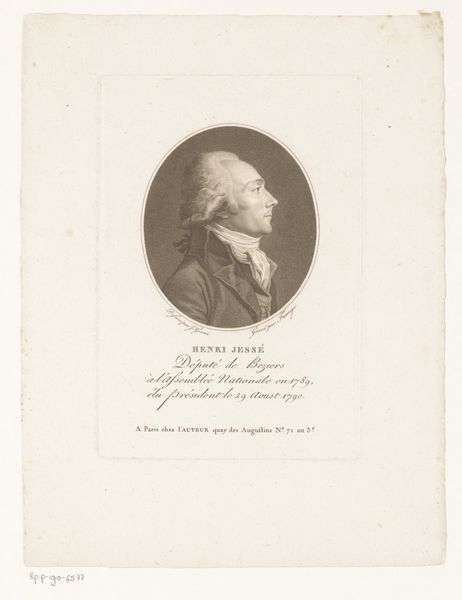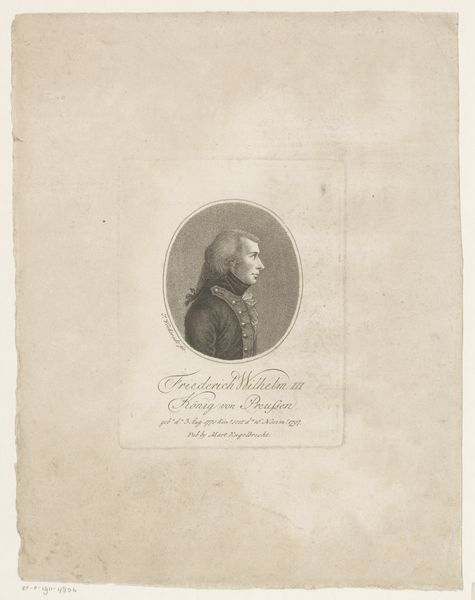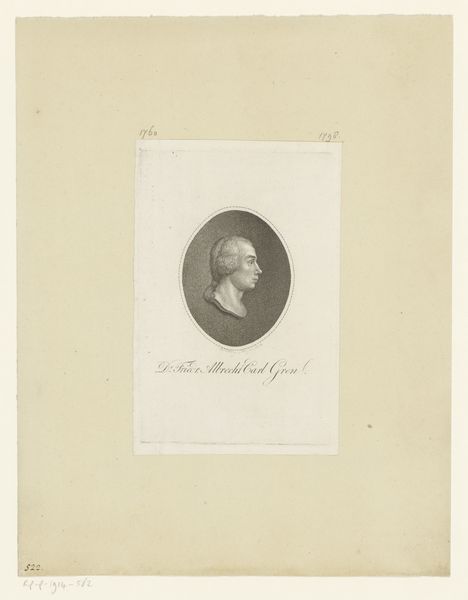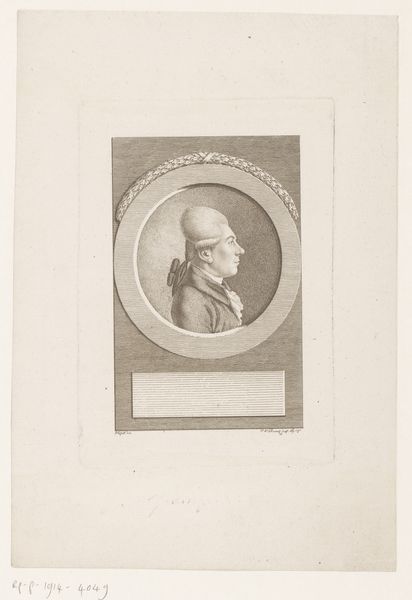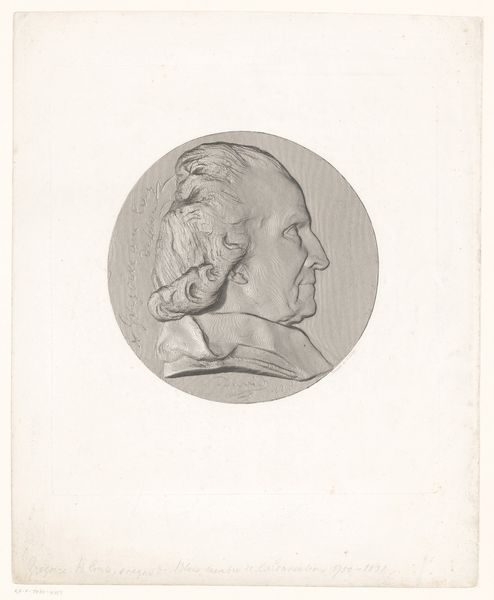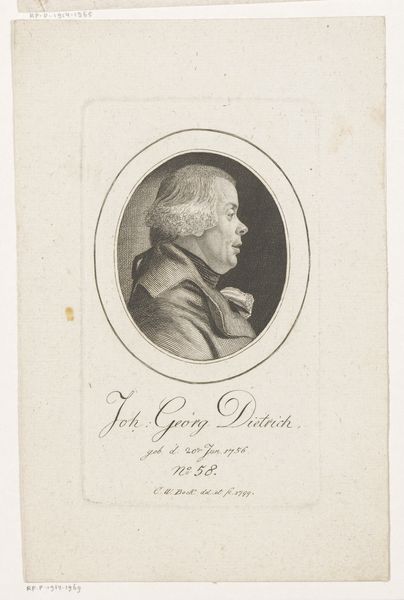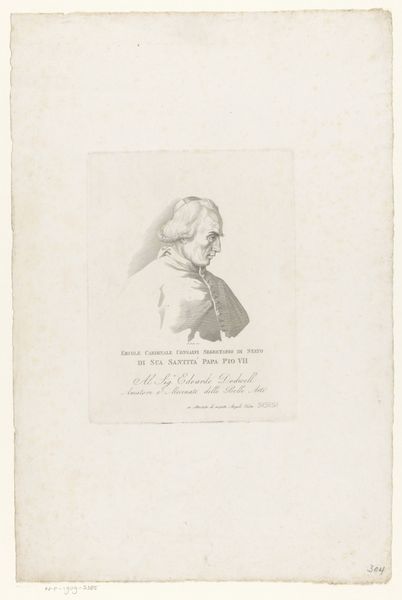
engraving
#
portrait
#
neoclacissism
#
old engraving style
#
engraving
Dimensions: height 150 mm, width 91 mm
Copyright: Rijks Museum: Open Domain
Editor: Here we have Christoph-Wilhelm Bock's 1800 engraving, "Portret van Gottfried Helwig Weinhart," currently held at the Rijksmuseum. There’s a formality to it, a stillness, that I find quite compelling. What layers of context might enrich our understanding of this work? Curator: This engraving offers a window into the Neoclassical obsession with order and reason during a period of immense social upheaval. While ostensibly a portrait, how can we understand it within the larger historical narrative of class and power? Weinhart, as 'Rittmeister' or cavalry master, belonged to a military elite whose authority was increasingly challenged by emerging revolutionary ideals. Editor: So, you are saying it's more than just a portrait of one man? Curator: Precisely. This image actively constructs and reinforces a specific identity, linked to military prowess and aristocratic privilege, during a period of radical transformation of European social structures. Consider how the controlled lines of the engraving and the stoic profile reflect the values upheld by the elite at the turn of the 19th century. The formal composition subtly excludes the socio-economic realities that fuel revolution. Does that resonate with you? Editor: Yes, the deliberate composure seems almost a denial of the chaotic times. It's interesting to think of it as a kind of visual counter-narrative. Curator: It’s also interesting to consider how the act of portraiture itself became a tool for maintaining and communicating specific social standing during a period of rapidly changing social norms and how that is further transformed by being distributed through printed engravings. What have you found most compelling in understanding the portrait today? Editor: I hadn't initially considered its social and political dimensions so directly. The rigid formality now speaks volumes about the anxieties of a privileged class on the cusp of change. Curator: Exactly, we see how art serves not just as a reflection, but also as an active participant in the dramas of its time.
Comments
No comments
Be the first to comment and join the conversation on the ultimate creative platform.
